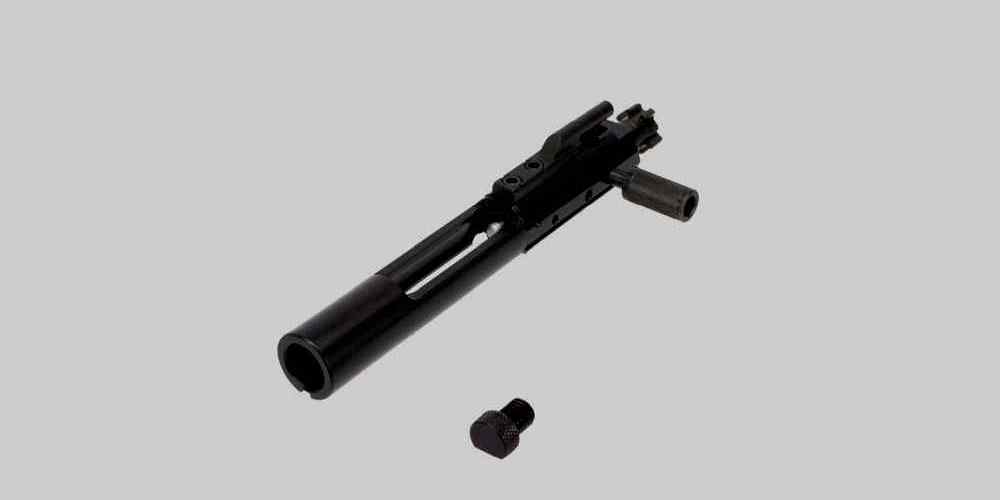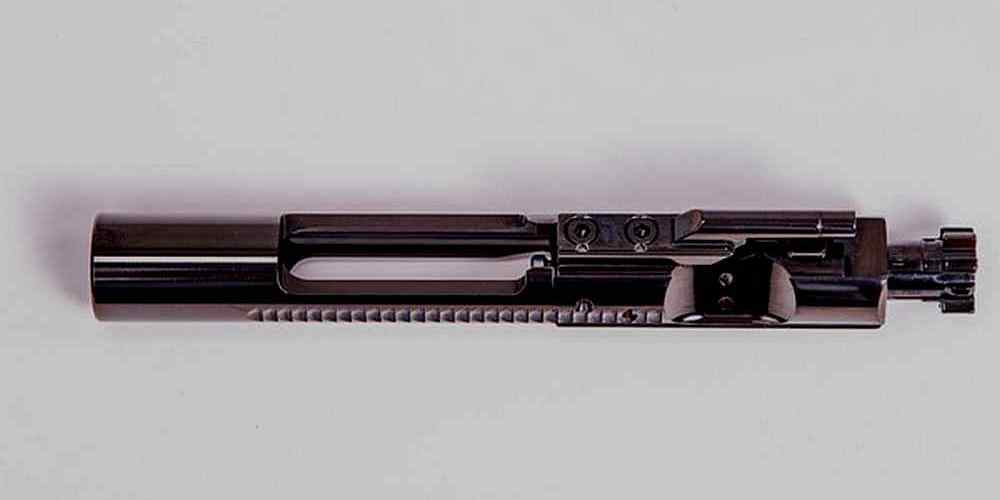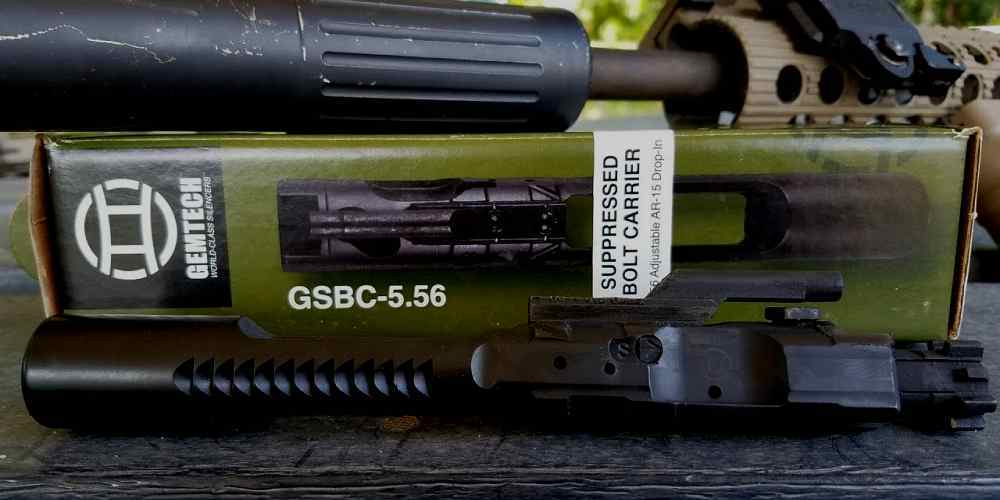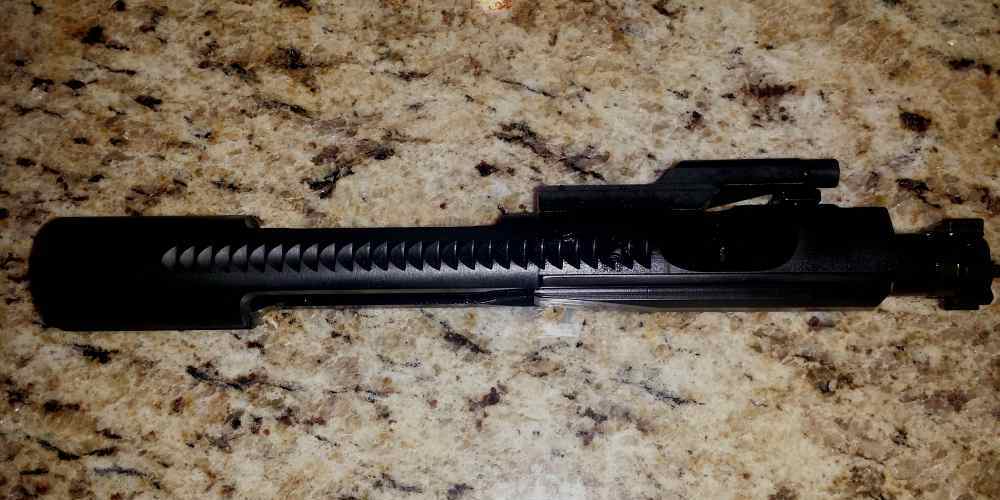“Unlocking peak performance for your AR15 with precision engineering.”
Benefits of Using BCG Gas Keys in AR15 Rifles
When it comes to optimizing the performance of your AR15 rifle, one component that often gets overlooked is the BCG gas key. This small but crucial part plays a significant role in ensuring optimal gas flow, which in turn affects the overall functioning of your rifle. In this article, we will delve into the science behind BCG gas keys and explore the benefits of using them in your AR15.
The BCG gas key is a small, rectangular piece of metal that is attached to the bolt carrier group (BCG) of an AR15 rifle. Its primary function is to channel hot gases from the fired round back into the rifle’s gas system, where they can be used to cycle the action and chamber a new round. Without a properly functioning gas key, the rifle may experience malfunctions such as failure to eject or failure to feed.
One of the key benefits of using a BCG gas key in your AR15 is that it helps to regulate the amount of gas that is used to cycle the action. By controlling the flow of gas, the gas key ensures that the rifle operates reliably and consistently, regardless of the type of ammunition being used. This is particularly important for shooters who use a variety of ammunition types, as different loads may require different amounts of gas to cycle the action effectively.
Another benefit of using a BCG gas key is that it helps to reduce recoil and muzzle rise. By efficiently channeling gas back into the gas system, the gas key helps to counteract the forces generated by the firing of a round, resulting in a smoother shooting experience. This can be especially beneficial for shooters who engage in rapid-fire or competition shooting, where minimizing recoil and muzzle rise can lead to improved accuracy and faster follow-up shots.
In addition to improving the performance of your rifle, using a BCG gas key can also help to extend the life of your firearm. By ensuring that the gas system operates smoothly and efficiently, the gas key helps to reduce wear and tear on the internal components of the rifle. This can result in fewer malfunctions and a longer service life for your AR15, saving you time and money on repairs and replacements.
When choosing a BCG gas key for your AR15, it is important to select a high-quality, properly machined part that is designed to withstand the rigors of shooting. Look for gas keys that are made from durable materials such as steel or titanium, and ensure that they are properly staked to the bolt carrier group to prevent them from coming loose during firing.
In conclusion, the BCG gas key is a small but essential component of your AR15 rifle that plays a crucial role in ensuring optimal gas flow and reliable operation. By using a high-quality gas key, you can improve the performance of your rifle, reduce recoil and muzzle rise, and extend the life of your firearm. So, next time you are looking to upgrade your AR15, don’t forget to consider the benefits of using a BCG gas key.
Importance of Proper Gas Flow in AR15 Rifles
Gas key is a crucial component of an AR15 rifle that plays a significant role in ensuring optimal gas flow. The gas key is located on top of the bolt carrier group (BCG) and is responsible for directing gas from the barrel into the BCG to cycle the action of the rifle. Proper gas flow is essential for the reliable operation of an AR15 rifle, as it helps to ensure that the rifle functions smoothly and consistently.
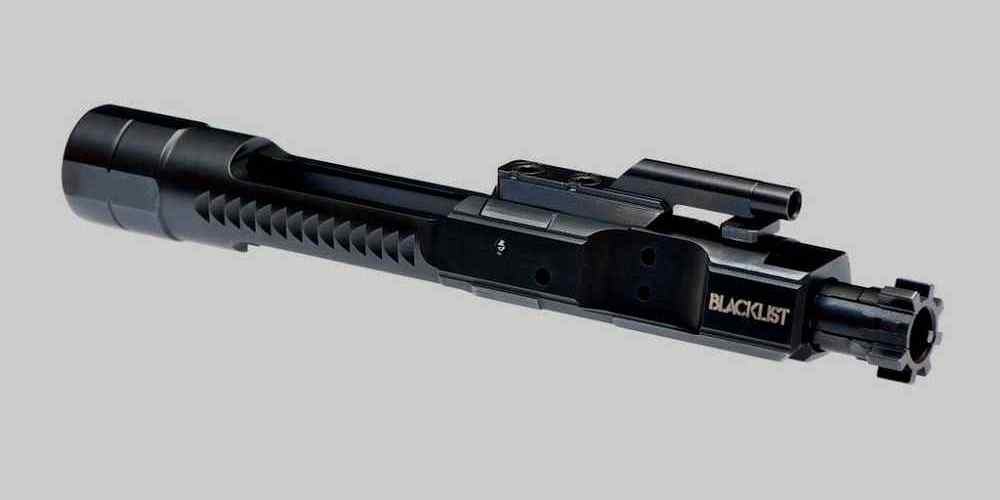
When the rifle is fired, gas is directed from the barrel through the gas block and into the gas tube. The gas then travels through the gas key and into the BCG, where it pushes the bolt carrier back to cycle the action. If the gas key is not properly aligned or if there are any obstructions in the gas flow, it can lead to malfunctions such as failure to extract, failure to eject, or failure to feed.
To ensure optimal gas flow in an AR15 rifle, it is important to properly install and maintain the gas key. The gas key should be securely attached to the BCG with the proper torque specifications to prevent it from coming loose during firing. Additionally, the gas key should be properly aligned with the gas tube to allow for smooth and efficient gas flow.
Regular cleaning and maintenance of the gas key is also important to ensure optimal gas flow. Over time, carbon buildup and debris can accumulate in the gas key, which can impede gas flow and lead to malfunctions. Cleaning the gas key regularly with a solvent and brush can help to prevent these issues and ensure that the rifle functions properly.
In addition to proper installation and maintenance, the design and quality of the gas key can also impact gas flow in an AR15 rifle. High-quality gas keys are typically made from materials such as steel or titanium, which are durable and resistant to wear and corrosion. These materials help to ensure that the gas key remains in good condition and allows for consistent gas flow over time.
Furthermore, the design of the gas key can also affect gas flow in an AR15 rifle. Gas keys with a properly sized and shaped gas port can help to optimize gas flow and improve the overall performance of the rifle. Some gas keys also feature enhancements such as staking or sealing to further improve gas flow and prevent gas leakage.
Overall, proper gas flow is essential for the reliable operation of an AR15 rifle. By ensuring that the gas key is properly installed, maintained, and of high quality, shooters can help to prevent malfunctions and ensure that their rifle functions smoothly and consistently. Investing in a high-quality gas key and taking the time to clean and maintain it regularly can go a long way in ensuring optimal gas flow in an AR15 rifle.
How BCG Gas Keys Improve Rifle Performance
Gas keys are a crucial component of the AR15 rifle, responsible for ensuring optimal gas flow and overall performance. Understanding the science behind BCG gas keys can help gun owners make informed decisions when it comes to maintaining and upgrading their firearms.
The gas key is a small, rectangular piece of metal that is attached to the bolt carrier group (BCG) of the AR15. It serves as a connection point between the gas tube and the BCG, allowing gas to enter the BCG and cycle the action of the rifle. Without a properly functioning gas key, the rifle would not be able to cycle properly, leading to malfunctions and decreased performance.
One of the key factors that determine the effectiveness of a gas key is its design. Gas keys are typically made from steel and are either staked or pinned to the BCG. Staking involves deforming the metal around the gas key to secure it in place, while pinning involves using a small metal pin to hold the gas key in place. Both methods are effective in ensuring that the gas key remains securely attached to the BCG during firing.
In addition to the design of the gas key, the size and shape of the gas ports also play a crucial role in determining gas flow. Gas ports are small holes located on the gas key that allow gas to enter the BCG. The size and shape of these ports can impact the amount of gas that enters the BCG, which in turn affects the cycling of the rifle.
Gas keys with larger gas ports allow more gas to enter the BCG, which can increase the speed and reliability of the rifle’s cycling. However, too much gas can lead to excessive recoil and wear on the rifle. On the other hand, gas keys with smaller gas ports restrict the amount of gas that enters the BCG, which can result in slower cycling and decreased reliability. Finding the right balance between gas flow and recoil is essential for optimizing rifle performance.
Another important factor to consider when it comes to gas keys is the material from which they are made. Steel is the most common material used for gas keys due to its durability and resistance to heat and pressure. However, some gun owners opt for titanium gas keys, which are lighter and have a higher strength-to-weight ratio than steel. While titanium gas keys can offer some advantages in terms of weight and strength, they are also more expensive and may not be necessary for all shooters.
In conclusion, understanding the science behind BCG gas keys is essential for ensuring optimal gas flow and performance in your AR15 rifle. By choosing a gas key with the right design, size, and material, you can improve the reliability and efficiency of your firearm. Whether you are looking to upgrade your current gas key or simply maintain your rifle, investing in a high-quality gas key is a worthwhile investment that can enhance your shooting experience.
The Role of Gas Keys in Preventing Malfunctions
When it comes to owning an AR15, ensuring optimal gas flow is crucial for preventing malfunctions and maintaining the overall performance of your firearm. One key component that plays a significant role in this process is the BCG gas key. Understanding the science behind BCG gas keys can help you appreciate their importance and make informed decisions when it comes to maintaining your AR15.
The BCG gas key is a small but essential part of the bolt carrier group (BCG) in an AR15. It is attached to the top of the bolt carrier and serves as a connection point for the gas tube, which directs gas from the fired round back into the firearm to cycle the action. The gas key is secured to the bolt carrier with two screws and is designed to withstand the high-pressure gas that is generated when a round is fired.
One of the primary functions of the BCG gas key is to ensure that the gas from the fired round is properly directed into the gas tube. If the gas key is not properly aligned or secured, it can lead to gas leakage, which can result in a loss of gas pressure and a failure to cycle the action. This can cause malfunctions such as failure to eject or failure to feed, which can be frustrating and potentially dangerous in a critical situation.
To prevent these issues, it is essential to ensure that the BCG gas key is properly installed and maintained. This includes checking the alignment of the gas key, ensuring that the screws are tightened to the correct torque specifications, and inspecting the gas key for any signs of wear or damage. Regular cleaning and lubrication of the gas key can also help prevent corrosion and ensure smooth operation.
Another important aspect of the BCG gas key is its role in regulating the amount of gas that is directed into the gas tube. The size and shape of the gas key can affect the amount of gas that is allowed to flow through, which can impact the cycling of the action. A properly designed gas key will allow for optimal gas flow, ensuring that the firearm functions reliably and consistently.
In addition to regulating gas flow, the BCG gas key also plays a role in reducing felt recoil and muzzle rise. By directing the gas in a controlled manner, the gas key can help mitigate the effects of recoil and improve the overall shooting experience. This can be especially beneficial for shooters who are looking to improve their accuracy and control when firing their AR15.
Overall, the BCG gas key is a critical component of the AR15 that plays a significant role in ensuring optimal gas flow and preventing malfunctions. By understanding the science behind BCG gas keys and taking the necessary steps to properly install and maintain them, you can help ensure that your firearm functions reliably and consistently. So, next time you are cleaning or inspecting your AR15, don’t forget to pay attention to the BCG gas key – it may just be the key to a smoother shooting experience.
Comparing Different Types of BCG Gas Keys for AR15 Rifles
When it comes to optimizing the performance of your AR15 rifle, one crucial component to consider is the BCG gas key. This small but important part plays a significant role in ensuring proper gas flow within the rifle, which ultimately affects its reliability and functionality. In this article, we will delve into the science behind BCG gas keys and compare different types to help you make an informed decision for your AR15.
First and foremost, let’s discuss the function of the BCG gas key. This key is attached to the bolt carrier group (BCG) and serves as a connection point for the gas tube that redirects gas from the fired round back into the rifle’s action. The gas key is responsible for transferring this gas pressure to the BCG, which cycles the action and ejects the spent casing while chambering a new round.
One of the key factors to consider when choosing a BCG gas key is its material. The most common materials used for gas keys are steel and titanium. Steel gas keys are durable and cost-effective, making them a popular choice among AR15 owners. However, titanium gas keys are lighter and have a higher strength-to-weight ratio, which can potentially improve the overall performance of the rifle.
Another important consideration is the design of the gas key. There are two main types of gas key designs: staked and screw-on. Staked gas keys are secured to the BCG using metal stakes that are hammered into place, providing a secure and reliable connection. On the other hand, screw-on gas keys are attached using screws, allowing for easier installation and removal. However, screw-on gas keys may be less secure than staked gas keys and could potentially come loose during firing.
In addition to material and design, the size and shape of the gas key can also impact its performance. A properly sized gas key should have a tight fit on the BCG to prevent gas leakage and ensure optimal gas flow. The shape of the gas key can also affect how efficiently gas is transferred to the BCG, with some designs allowing for better gas distribution and cycling.
When comparing different types of BCG gas keys, it is essential to consider your specific needs and preferences. If you prioritize durability and cost-effectiveness, a steel gas key may be the best option for you. However, if you are looking to reduce weight and potentially improve performance, a titanium gas key could be worth considering.
In conclusion, the BCG gas key is a critical component of your AR15 rifle that plays a significant role in ensuring optimal gas flow and reliable cycling. By understanding the science behind BCG gas keys and comparing different types, you can make an informed decision that will help you get the most out of your rifle. Whether you choose a steel or titanium gas key, staked or screw-on design, the key is to find a balance between durability, performance, and ease of use to enhance your shooting experience.





